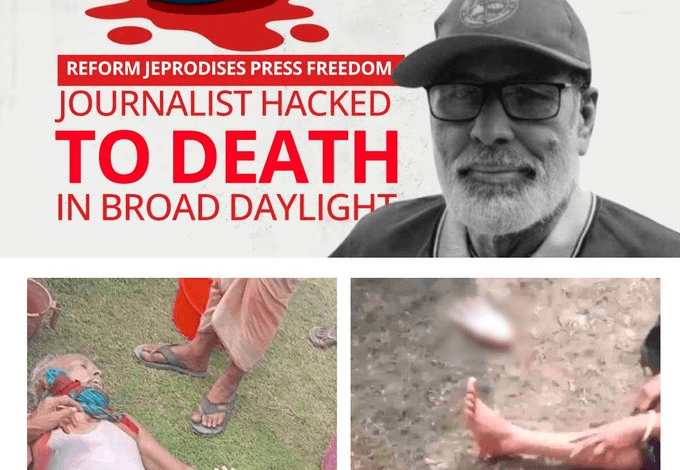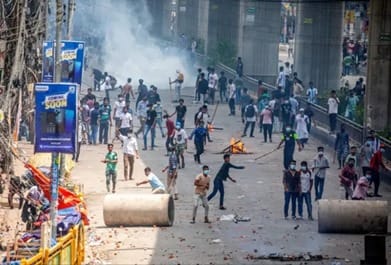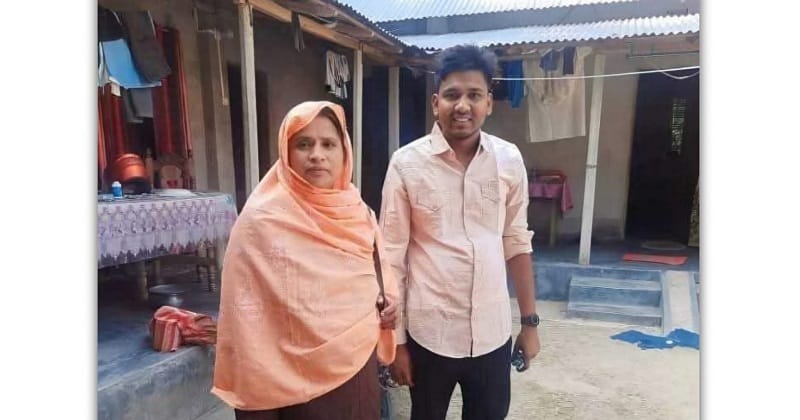Press Freedom Under Threat: Journalist Swapan Bhadra Hacked to Death in Bangladesh
Bangladesh’s deteriorating state of press freedom took a gruesome turn with the brutal murder of senior journalist Swapan Bhadra in broad daylight. Bhadra, known for his outspoken criticism of the

Bangladesh’s deteriorating state of press freedom took a gruesome turn with the brutal murder of senior journalist Swapan Bhadra in broad daylight. Bhadra, known for his outspoken criticism of the rising attacks on minorities and rampant drug abuse, was lured out of his home and hacked to death around 11:00 am. His severed wrists lay as a chilling symbol of the violent crackdown on dissent.
Bhadra, former vice-president of the Tarakanda Press Club and reporter for the national daily Khobor Patra and local daily Ajker Khobor, had earned the ire of communal forces, according to local reporters. His fearless reporting on social issues was seen as a direct challenge to those responsible for the growing intolerance and criminal activity in Bangladesh.
Press Under Siege
The killing of Swapan Bhadra marks the latest kill in the worrying trend of violence against journalists in Bangladesh. In the last two months alone, the highest number of journalists have been wrongly implicated in murder cases under the guise of reforms. Critics argue that reforms, which were apparently announced to restore order, are being used to suppress freedom of speech, gag the press, and stifle political dissent.
In fact, few journalists who criticise injustice, like Bhadra, are today terrorised by the threats that accompany them. In some cases, they have been downright killed. Human rights organisations and advocacy groups for the press condemns this attack as a gross violation of freedom of the press and dangerous escalation in violence against media workers in Bangladesh.
A Dangerous Climate for Journalists
Bangladesh, once viewed as the country to watch for democratic reform, has seen a sharp and frightening decline in this regard. Free expression space has shrunk dramatically as the government of the day has been very much invested in the squeezing of dissent through both rule-of-law mechanisms and extra-legal intimidation. A growing Islamist power and increasingly rowdy political contests have targeted journalists like Swapan Bhadra to keep a mainly captive audience in line.
The killing of Swapan sends a mighty message to the journalists in Bangladesh: if they are going to challenge the status quo and report on the social ills of a society, perhaps they might pay with their lives. It is a violent silencing of the press; from a greater crisis in Bangladesh wherein political opposition, human rights activists, and journalists are targeted systematically.
Reform or Repression?
Many have asked for the real purpose of the new government’s promised reforms to ‘strengthen’ governance. While promising an institutionally strong democracy and democratic accountability, these reforms have increasingly been used against critics. Following are just a few of the many journalists charged with crimes they didn’t commit in the past two months-mostly consisting of fabricated crimes-that observers say are actually aimed at muting dissenting voices:.
International reaction has called for an investigation into the murder and protection of journalists from further violence by the Bangladeshi government. Still, with Bangladesh’s politics growing more unpredictable by the day, the future of press freedom in Bangladesh hangs uncertainty in the balance.
Conclusion
Swapan Bhadra’s brutal murder is a tragic reflection of the dangerous state of press freedom in Bangladesh. As the nation senses an upsurge in authoritarianism and attacks against journalists gain ground, democracy is endangered from all sides. The prospects of a country falling into irrepressible and virulent repressive tendencies galvanise concerns for the immediate safe-guarding of freedom of expression in all its manifestations, be it in print, broadcast or web media.



